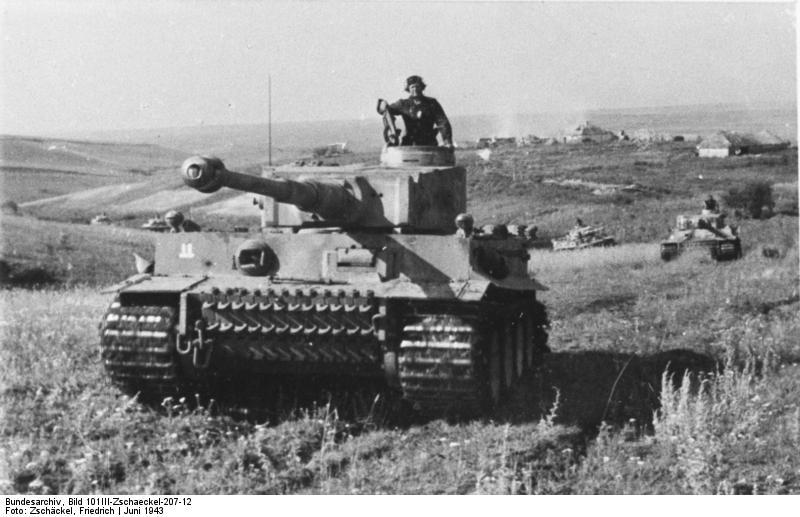Panzerkampfwagen VI Ausführung E "Tiger" at Kursk
The heavy industrial firm Henschel und Sohn, known for producing high quality locomotives as well as the Panzer I, II, and III, produced the Tiger. Nevertheless, the Tiger's size and complexity meant an expensive and slow production proces. The greatest number of Tigers built in any single month only reached 104, and this number came in April 1944; far too late in the war for guaranteeing the Reich's survival. Each Tiger tank possessed 26,000 parts, needed 300,000 man-hours to build, and fully outfitted cost nearly 300,000 Reich marks. Therefore, each Tiger took twice as long to build as the new Panther main battle tank, cost as much as three Panzer IV medium tanks, at 103,500 Reich marks apiece, or nearly three Panthers at 117,000 Reich marks each. Henschel built only 1350 Tigers between August 1942 and August 1944; all made in Kessel Germany, and a number totalling less than a single month's production of T-34s.
The Tiger also was also bedeviled by substantial operating expenses to match the vehicle's high production cost. The Tiger consumed fuel in tremendous amounts, and demanded extraordinary service time to remain in operating condition. Each tank went through 535 liters of fuel for every 60 miles traveled; with another 82 liters of oil needed to keep the engine, transmission, gears, drives, and turret operating. The biggest problem with the Panzer VI Tiger tank was its unnecessary size and weight. The tank was a relatively unimaginative design; it resembled little more than a massive Panzer IV. German engineers could have more effectively designed and built the Tiger simply by sloping the armor to even a small degree. Sloped armor offered great savings in weight, primarily because a tank with sloped armor could deflect enemy armor piercing rounds as if the vehicle mounted thicker vertical armor plating. Lower weight also reduced fuel consumption, and increased transmission and engine life. Among other things, these benefits produced by lowering a tank's weight also reduced the servicing time caused by increased wear and tear.
In summary, the Tiger, for all its accolades, represented a less than the ideal weapons platform and featured clear tradeoffs in capabilities; its potent firepower and protection on the one hand against its poor range and serviceability on the other. In all likelihood the Germans would have put up an even stiffer late war defensive effort had they concentrated their efforts on producing more cost effective medium tanks such as the latest marks of the Panzer IV.
Picture Courtesy of Deutsches Bundesarchiv (German Federal Archive), Bild 101III-ZSchaeckel-207-12


